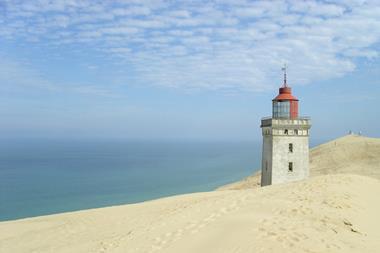DENMARK - Profits at Denmark's FunktionærPension surged in the first half, with solvency levels reaching a four-year high ahead of the fund's merger with Dansk Erhverv Pension.
The labour-market scheme, which covers office workers, made a DKK12.1m (€1.6m) profit from January to June, after a profit of DKK2.1m in the same period last year.
Solvency coverage rose to 341% at the end of June from 306% at the end of last year, to stand at its highest level in at least four years.
In its interim report, the pension fund said the balances in shadow accounts from 2011 had been recognised as income in the first half of 2012.
It also said life insurance provisions had fallen by just over DKK630m by the half-year stage as a result of the new discount yield curve for calculating liabilities, introduced in June by the government.
The investment return before tax was 11.7%, compared with 16.1% for the 2011 full year.
Contributions were broadly flat at DKK605.4m in the first half compared with DKK609.5bn in the same period last year.
Assets under management stood at DKK15bn at the end of June, slightly higher than the DKK14.4bn reported at the end of December.
FunktionærPension is set to merge this month with fellow labour-market scheme Dansk Erhverv Pension to form a larger scheme with 90,000 active members.
The new scheme - Pension for Funktionærer (Clerical Workers' Pension) - will be run by PFA, which already administers both schemes separately.
Meanwhile, Lærernes Pension announced it would stick with its 3% account dividend for members, despite the industry-wide 2% cap on such payouts agreed in June between pension funds and the government.
Morten Malle, head of investment at the pension fund for teachers, said: "We have good reserves and no problems meeting our guarantees. So we are able to take on the risk necessary to achieve good returns."
The pact with the government contained a package of measures designed to ease the burden on pension funds struggling with rising official reserve requirements after long bond yields fell.
The cap on pension fund payouts to members was meant to ensure resources freed by the new discount yield curve were used to consolidate the financial strength of the schemes rather than attract customers.
Lærernes Pension acknowledged the limit set by the industry and government, but said it was not under threat from low yields, or from any future increased demand for reserves.
"Therefore, we are continuing to give a 3% deposit rate, so members can reap the benefits of being in a solid company with good profits," the fund said.
Lærernes Pension reported a rise in pre-tax profit to 5.2% at the end of June, from 0.7% in the same period the year before.
Group assets under management rose to DKK52.7bn at the end of June from DKK47.9bn at the end of 2011.
AP Pension - which had been the most vocal pension fund opposing the account dividend cap - said last week it would cut its rate to 3.25% in order to comply.
Although this is above the 2% limit, it represents a drop from the current level of 4.7%.
In other news, Industriens Pension saw its total assets grow to DKK112bn at end of June, up from DKK101bn at the end of last year.
The investment result increased to DKK4.4bn in the first half of the year after tax - up DKK5.7bn from the figure achieved at the same point last year.
The overall return on actively managed investments was 5.2%, the fund said, adding that interest-rate hedging for with-profits liabilities had added 0.2% to the overall return.
However, strategic hedging of equities risk had reduced it by 0.6%, leaving a net 4.7% return.
Membership rose to 392,000 at the end of June from 381,000 a year earlier.
Separately, Pædagogernes Pensionskasse (PBU) reported a 3.8% return in the first half of the year for its main unit-link product.
This compares with a 2011 full-year return of 5.3% for the Pensionspakken product, according to the interim report of the Danish pension fund for education practitioners.
Looking ahead, PBU said there was uncertainty surrounding full-year results because a range of global economic conditions remained unclear.
In particular, the debt crisis in Europe and doubts over growth in the US were keeping financial markets unsettled, it said.
Assets under management at PBU rose to DKK41.8bn at the end of June from DKK39.8bn at the end of 2011.












No comments yet